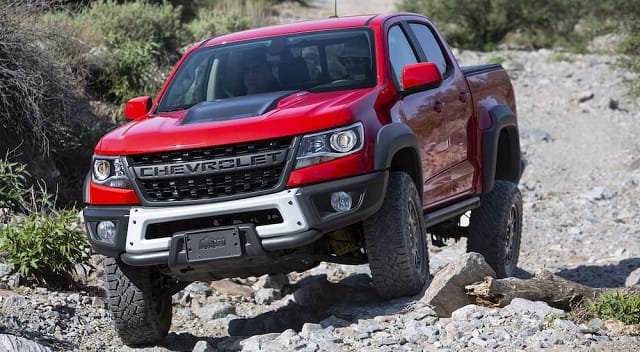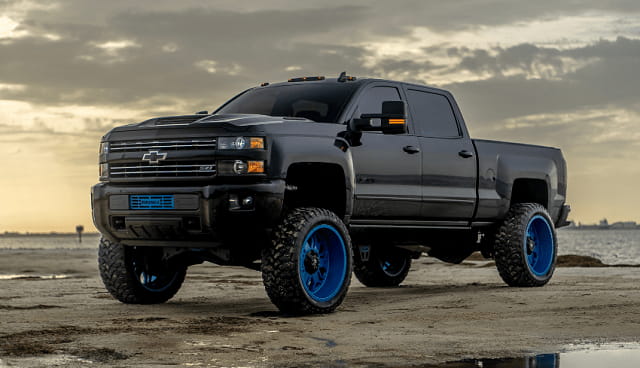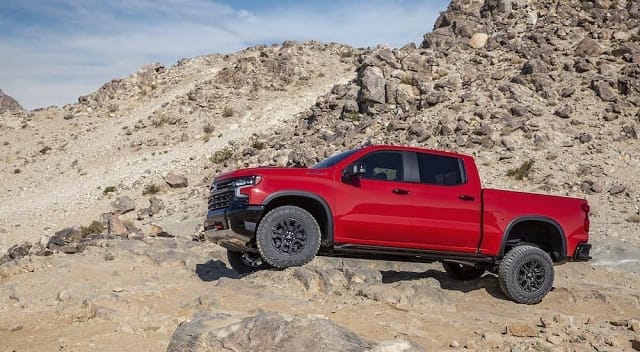lifted truck maintenance tips – Owning a lifted truck offers a unique combination of performance, aesthetic appeal, and off-road capability. However, it also comes with its own set of maintenance challenges that go beyond those of a standard truck. Regular and diligent maintenance is critical to ensuring that your lifted truck performs optimally, remains safe to drive, and stands the test of time. In this comprehensive guide, we will explore the most essential maintenance tips to keep your lifted truck in peak condition, so you can enjoy both on-road and off-road adventures without worry.
1. Inspect and Maintain the Suspension System Regularly
One of the most important aspects of maintaining a lifted truck is ensuring the suspension system is in excellent condition. The lift kit places added strain on your truck’s components, and neglecting this area can lead to major issues down the road.
- Shocks and Struts: Inspect the shocks and struts regularly for any signs of wear or leakage. The additional height of the truck places extra stress on these parts, which can lead to premature wear.
- Control Arms and Ball Joints: Lifted trucks often experience increased stress on control arms and ball joints. Look out for signs of wear such as looseness, squeaking noises, or uneven tire wear.
- Bushings: Regularly inspect the suspension bushings for wear. Worn bushings can affect alignment and handling, and replacing them on time will prevent further damage to the suspension components.
2. Monitor Tire Wear and Perform Regular Rotations
Lifted trucks are often equipped with larger, more aggressive tires, which can wear down quickly if not properly maintained. Tire maintenance is critical to prolonging the life of the tires and ensuring safety while driving.
- Tire Rotation: Regularly rotate the tires to ensure even wear. Due to the weight distribution of a lifted truck, tires tend to wear unevenly, particularly the front tires which carry more load when turning.
- Tire Alignment: The change in suspension geometry that comes with a lift kit can cause the tires to misalign more frequently. Schedule regular tire alignments to prevent uneven tire wear and maintain optimal handling.
- Tire Pressure: Always monitor tire pressure closely. Over-inflated or under-inflated tires can lead to uneven wear and reduced fuel efficiency. Additionally, properly inflated tires are essential for optimal off-road performance.
3. Check the Drivetrain and Differential Fluid
The drivetrain in a lifted truck experiences additional strain, especially if the vehicle is frequently used off-road. Maintaining the drivetrain and differentials is crucial for ensuring longevity.
- Drivetrain Inspection: Regularly inspect the drivetrain for any signs of wear or damage. These could be early signs of drivetrain issues if you hear clunking noises or experience difficulty shifting.
- Differential Fluid Changes: Lifted trucks, especially those used for off-roading, require regular differential fluid changes. The additional torque and traction demand can cause the fluid to degrade faster. Be sure to follow the manufacturer’s recommended intervals for fluid changes.
4. Keep an Eye on the Braking System
The braking system on a lifted truck often has to work harder due to the increased weight and larger tires. Ensuring your brakes are in optimal condition is not just a matter of performance but safety.
- Brake Pads and Rotors: Check the brake pads and rotors regularly for wear. Larger, heavier tires and the added weight of a lifted truck can wear out these components more quickly than in standard trucks.
- Brake Lines: After installing a lift kit, check that the brake lines have sufficient slack to accommodate the increased height. If the brake lines are too short, they could become stretched or damaged, leading to brake failure.
- Brake Fluid: Regularly check the brake fluid levels, as larger tires require more braking force, which in turn generates more heat and can cause brake fluid to degrade faster.
5. Pay Attention to Steering Components
Lifted trucks often experience more strain on the steering system than regular vehicles. Steering components such as tie rods, drag links, and steering stabilizers need to be carefully monitored for signs of wear or damage.
- Steering Stabilizer: A steering stabilizer can help improve the handling of a lifted truck, especially when driving off-road or at high speeds. Be sure to check the stabilizer for any leaks or damage.
- Tie Rods and Drag Links: Regularly inspect tie rods and drag links for wear. These components are more prone to stress in lifted trucks, and failing to replace them when necessary can result in dangerous steering issues.
6. Maintain Proper Alignment and Geometry
When lifting a truck, the vehicle’s suspension geometry changes significantly, which can lead to handling and performance issues if not properly addressed. Ensuring your lifted truck’s alignment and geometry are within acceptable parameters is crucial for maintaining safety and performance.
- Caster and Camber Adjustments: The angle of the tires relative to the road (caster and camber) can change after installing a lift kit. Adjust these angles to prevent uneven tire wear and ensure the truck handles properly.
- Track Bar and Panhard Bar Adjustments: A lifted truck may require an adjustable track bar to keep the axle centered. Failure to address this could lead to poor handling and increased stress on other suspension components.
7. Keep the Undercarriage Clean
Off-road enthusiasts know that lifted trucks often accumulate a lot of dirt, mud, and debris, especially around the undercarriage. Keeping this area clean is essential to preventing long-term damage.
- Power Wash the Undercarriage: After off-roading, use a power washer to remove dirt and debris from the undercarriage. Mud can cause rust and wear down vital components, including the frame and suspension.
- Protective Coating: Applying an undercarriage protective coating can prevent rust and corrosion, especially if you frequently drive through harsh conditions like mud, snow, or salty roads.
8. Monitor Transmission and Cooling Systems
Lifted trucks often put more strain on the transmission and cooling system due to larger tires, increased weight, and the added strain of off-road driving.
- Transmission Fluid: Ensure your transmission fluid is checked and replaced at the recommended intervals. The transmission in a lifted truck can overheat more easily, so fluid levels must be closely monitored.
- Cooling System: Check your radiator and cooling system regularly. Off-roading can clog the radiator with mud and debris, which can lead to overheating. Flush the system and clean the radiator to prevent engine overheating.
Conclusion
Maintaining a lifted truck requires more diligence and attention to detail than a standard vehicle, but following these comprehensive maintenance tips will ensure your truck stays in excellent condition for years to come. Regular inspections, timely replacements of worn components, and a proactive approach to truck care will not only keep your lifted truck running smoothly but will also enhance its performance both on and off-road.
 Trucks for Sale Find the best deals on used trucks for sale across the USA. Browse pickups, semi trucks, dump trucks and more – updated daily
Trucks for Sale Find the best deals on used trucks for sale across the USA. Browse pickups, semi trucks, dump trucks and more – updated daily






